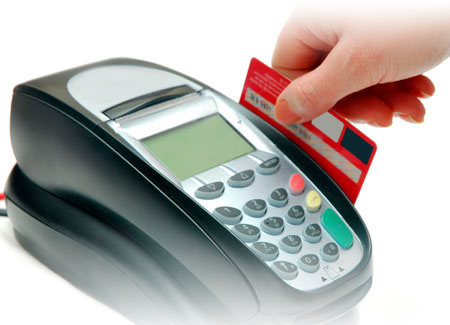The Chargeback Process
Chargebacks occur when a cardholder disputes a charge to his or her account. The diagram below represents the chargeback cycle.

The most common reasons for chargeback-resulting disputes are:
- Customer dispute over product or service quality
- Credit not received
- Improper authorization
- Fraud
- Processing error
- Inaccurate transaction information
As illustrated in the diagram above, a chargeback begins with the cardholder contacting his or her card issuer, notifying them that he or she is disputing a transaction. In most cases, before a chargeback is initiated, the card issuer requests a copy of the sales record. If there is sufficient evidence to support the cardholder’s request, the card issuer sends the transaction back to the acquirer, who, if not able to resolve the issue, may contact the merchant for additional information.
If the merchant represents sufficient evidence to warrant a reversal of the chargeback, the acquirer will forward the representation to the issuer through the Credit Card Network (Visa or MasterCard). If the chargeback is reversed, the card issuing bank does have the right to re-present the chargeback a second time.
Invalid Chargebacks
When the Credit Card Networks detect an invalid chargeback, it is automatically returned to the card issuer that originated it and the merchant and merchant bank never see it. Many merchant banks also have systems in place for reviewing disputes, which allows them to resolve issues before a chargeback is initiated. Together, these systems ensure that the chargebacks that you receive are legitimate or that only you can respond to them.
Chargeback Prevention
Most chargebacks result from inadequate payment processing procedures and can be prevented with appropriate training. At UniBul Merchant Services we have developed a Chargeback Manual and several guides for processing cards in various environments, which will help you reduce chargebacks by implementing a simple list of best practices. Click on the links below for additional information.
- Chargeback Manual
- UniBul Merchant Services’ Payment Card Acceptance Best Practices Guide
- eCommerce Risk Management Guide
- eCommerce Card Processing Guide
- Best Card Acceptance Practices for Face-to-Face Transactions
Associations Tools for Chargeback Prevention
Visa’s Verified by Visa and MasterCard’s MasterCard SecureCode provide merchants and consumers with an additional and powerful tool for preventing fraudulent transactions. The two programs work in similar ways. To participate, you need to install on your server a plug-in application for each tool and download the Verified by Visa and/or MasterCard SecureCode logo on your website. A cardholder needs to register his or her card to participate. This can be done on the card issuer’s website or even on your website if you choose to implement that feature. When a participating customer checks out, he or she is asked for a password that has been registered with their card issuer. The bank then verifies the cardholder’s identity and provides you with an electronic receipt of the purchase. Once the card issuer has authenticated its cardholder, you are protected against the most common types of chargebacks – “cardholder not authorized” and “cardholder not recognized”. As an added benefit, Verified by Visa protects you from fraud-related chargebacks on all personal Visa cards even if the cardholder is not enrolled or the card issuer is not participating.
![]()
















